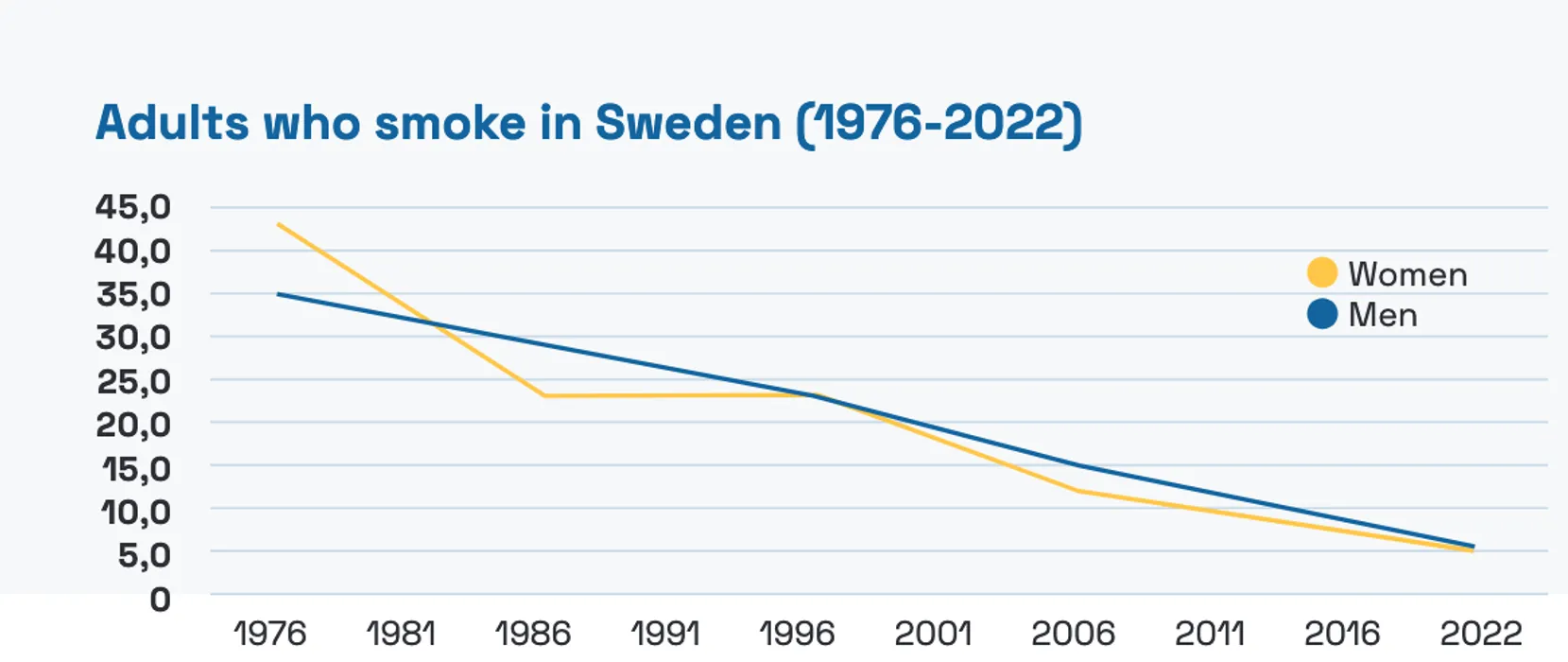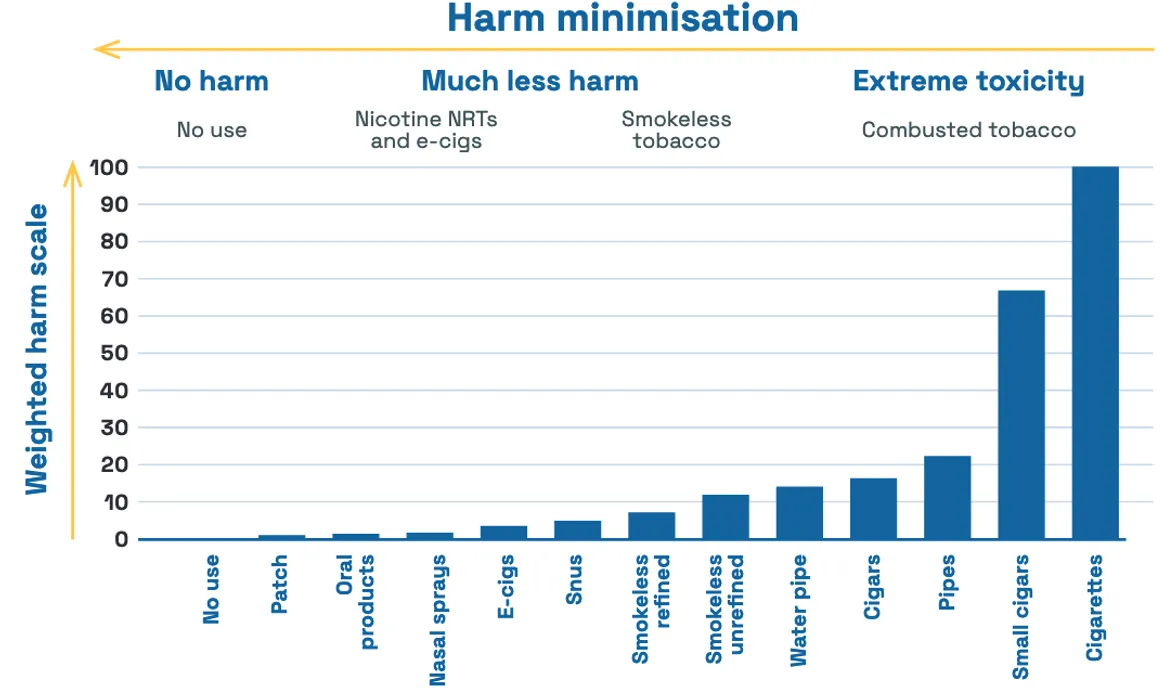Canadians for Tobacco Harm Reduction Association
A non-profit organization, our mission is to educate the public on the benefits of tobacco harm reduction (THR) and help Canada achieve a smoke-free future.

Our mission
Promote tobacco harm reduction through education and raising public awareness.
Smoking cigarettes is the most harmful way to consume nicotine. Nicotine is addictive but does not cause cancer, cardiovascular, gum, or respiratory disease.
Smoke-free by 2035.
By embracing THR (like Sweden and New Zealand have), we want to see Canada become a smoke-free country.
Encourage cigarette smokers to switch to reduced harm alternatives to cigarette smoking.
By encouraging smokers to switch to reduced harm alternatives, we can reduce disease burden, improve public health, and achieve the goal of a smokefree country together.
Tobacco Harm Reduction
Did you know that research suggests that nicotine pouches are believed to carry 0.1% the risk of cigarette smoking? Through education, we can help dispel myths, improve public health, and save lives.
Envisioning a smoke-free future
Roughly 20% of Swedish males use Snus, a form of oral smokeless tobacco with a risk profile comparable to vaping (approximately 5% that of cigarette smoking). With cigarette use at 5% of the population, Sweden is considered to be a smoke-free country (far ahead of the EU's goal of 2040) and has the lowest lowest rate of tobacco-related mortality in Europe [1]. In addition, New Zealand's smoking rate has been halved in only five years thanks to the widespread acceptance of smoke free products according to a report by a panel of international experts led by public health expert Dr Marewa Glover of New Zealand [2].

Figure 1: Adults who smoke in Sweden (1976-2022). Source: The Public Health Agency of Sweden, Use of tobacco and nicotine products (self-reported) by age, gender and year, 2022.
Nicotine - Get the facts
Smoking cigarettes (combustible tobacco) remains the most harmful way for a person to consume nicotine. Nicotine is addictive but does not cause cancer, cardiovascular, gum or respiratory disease [3]. For smokers who don't want to quit Nicotine, switching to a reduced-risk alternative is the next best option.

Figure 2: The weighted harm of combustible tobacco products compared to non-combustible nicotine alternatives, placed along the “harm minimization continuum”. Source: Abrams DB, Glasser AM, Pearson JL, Villanti AC, Collins LK, Niaura RS. Harm Minimization and Tobacco Control: Reframing Societal Views of Nicotine Use to Rapidly Save Lives. Annu Rev Public Health. 2018 Apr 1;39(1):193–213
Youth Nicotine Use
CanTHR is strongly opposed to youth use of products containing nicotine. We believe that the best way to age-gate the sale of these products is in retail stores as has been well established for alcohol, cannabis and tobacco sales.

Frequently Asked Questions (FAQ)
Interested in learning more? Here are some of our most frequently asked questions.
Become a member
Joining CanTHR is free and registering only takes a minute or two. Filling out the form will add you to our membership database and will enable us to provide you with important information including the CanTHR newsletter.